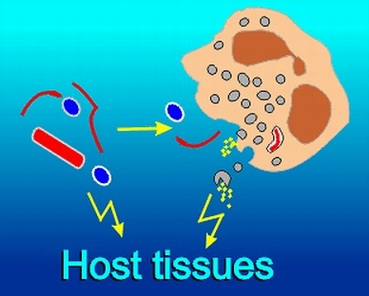Acute apical periodontitis




Acute apical periodontitis may follow immediately after direct infection of the pulp (x-ray above), or it may start as a acutization of chronic apical periodontitis. Typical clinical signs of acute AP are pain, swelling, tenderness to percussion, sometimes also abscess formation with a later development of a sinus tract.
In acute AP bacteria may be invading into the periapical tissues. Although the relative importance of the various factors of tissue destruction in acute AP are not known, it is probable that the direct effect of bacterial enzymes as well as hydrolytic enzymes released from phagocytic cells, in particular neutrophilic leukocytes, play a major role.
When acute AP follows directly from infection of the pulp, the early radiographic signs are small or even nonexistent. Usually the first indication of acute AP seen in the x-ray is a diffuse lesion around the apex.